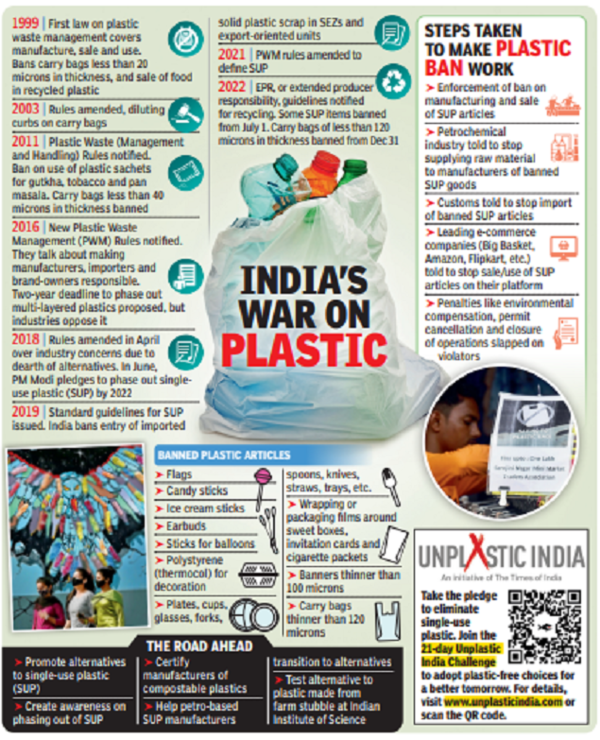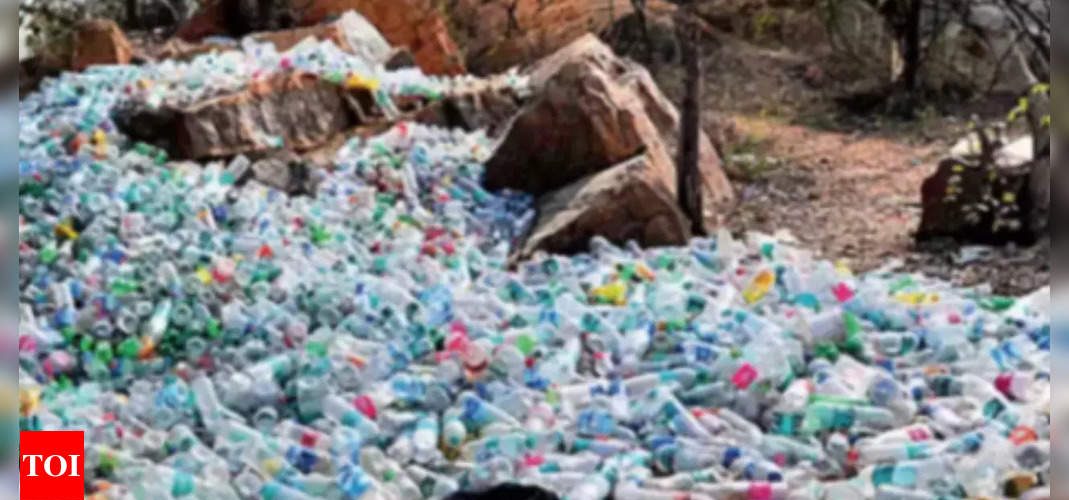Have these rules worked? Experts say they have certainly created awareness and produced some results. Nonetheless, half of India’s plastic waste remains unprocessed every year, leading to soil and water pollution. Lax enforcement is partly to blame, but the absence of alternatives for certain types of plastics and incentives for waste processing are also responsible.

“While many SUP items were included in the phase-out list, multilayered plastics (MLPs) were kept out of it as there is no viable way to recycle them,” says Suneel Pandey, director of the environment and waste management division at The Energy and Resources Institute (TERI). Cookie wrappers that look like plastic on the outside and metallic foil on the inside are a type of MLP.
However, in this year’s amended Plastic Waste Management Rules, “MLPs were included as a category of waste that has to be collected and used in road making, as co-processing fuel in cement kilns, or processed through pyrolysis,” Pandey adds.
In February 2022, the environment ministry had also notified ‘extended producer responsibility’ (EPR) to streamline the collection and recycling of plastic waste. EPR makes producers, importers and brand owners responsible for managing products in an environmentally sound manner. Now, waste generators who manage plastic waste efficiently can earn credits that can be bought and sold.
While most large businesses have shifted to non-SUP alternatives, “the problem persists with smaller vendors who find them costly compared with plastic,” says Pandey, adding that intense awareness drives, stricter monitoring and an incentive system will help the smaller vendors give up SUPs. Ultimately, the ban’s success depends on enforcement onthe ground, but many of the agencies responsible for this have been ineffective, says Siddharth G Singh, programme manager at Centre for Science and Environment (CSE). “The ban has become a paper tiger” due to poor enforcement by the likes of state pollution control boards and the local authorities, he says.
For example, the Central Pollution Control Board (CPCB) had introduced a monitoring mechanismfor the ban. It launched an app for citizens to report the sale of banned SUP items. However, CSE’s analysis shows a steady decline in the number of items reported and the complaints redressed. This is mostly due to lack of awareness about the ban among citizens and businesses. For example, while people mainly report plastic cutlery, CSE’s own survey showed almost a third of all the banned items reported were carry bags of less than120-micron thickness.
“The claim that India has banned single-use plastic is misleading. The banned SUP items constitute roughly 2-3% of the entire plastic that is manufactured,” says Singh. “We continue to sell hundreds of products that are single-use in nature, for instance multilayered packaging and PET bottles. The SUP ban in India addresses a mere 11% of the total SUP waste that is generated in the country. ”



